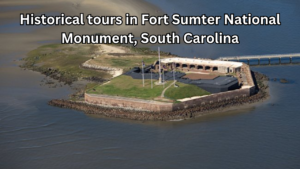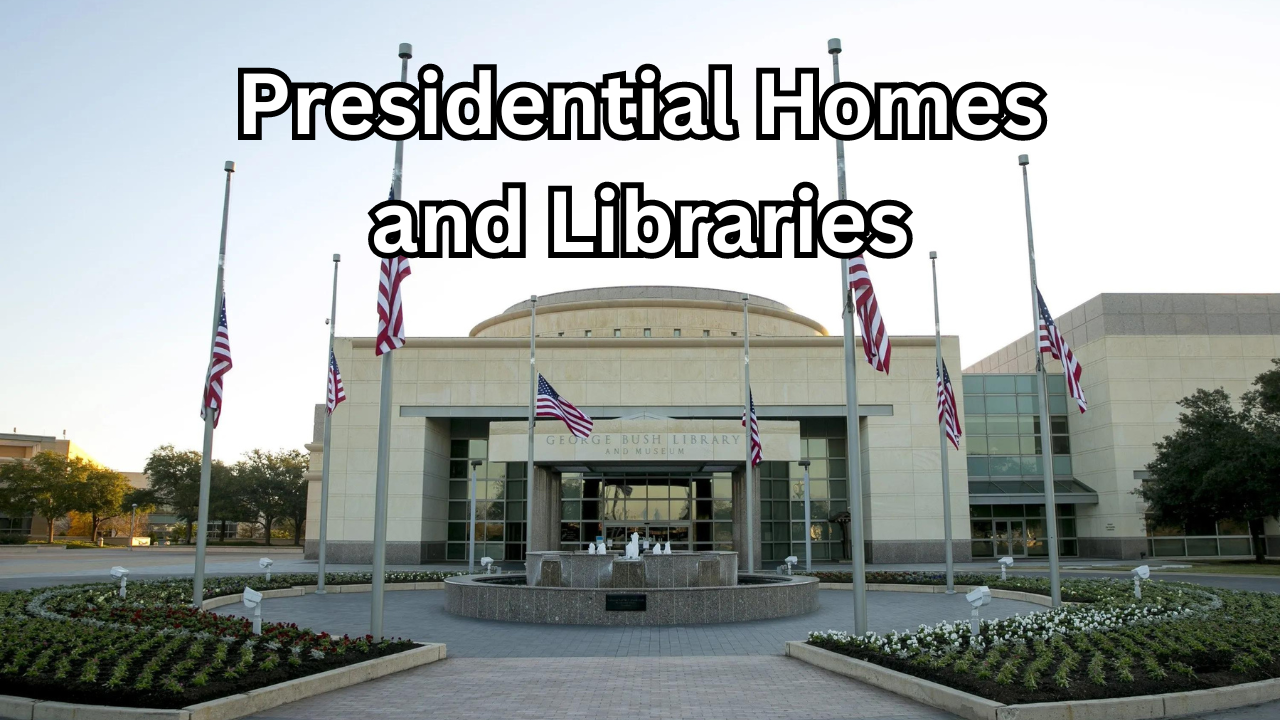
Table of Contents
Introduction
Presidential homes and libraries serve as more than just historical landmarks; they are vital repositories of American heritage, offering unique insights into the lives, legacies, and leadership styles of the nation’s chief executives. These sites provide an intimate look at the personal and professional experiences of U.S. Presidents, preserving their stories and contributions for future generations.
The significance of these locations extends beyond mere historical interest. They function as educational resources, cultural touchstones, and symbols of the democratic principles upon which the United States was founded. From the well-preserved estate of George Washington at Mount Vernon to the modern archives of Barack Obama’s library, each site offers a distinctive perspective on American history.
This project aims to explore the rich history and cultural importance of presidential homes and libraries. By examining notable examples and understanding their roles within the broader context of American leadership, we gain a deeper appreciation for the individuals who shaped the nation’s trajectory. Through visits to these sites, one can connect with the past and reflect on the enduring impact of presidential legacies.
Overview of the Significance of Presidential Homes and Libraries
Presidential homes and libraries are vital components of America’s historical tour and cultural landscape. They serve as living monuments to the lives and achievements of U.S. Presidents, providing a tangible connection to the individuals who have shaped the nation’s history. These sites offer a multifaceted view of presidential life, capturing not only the public persona of each leader but also their personal experiences and values.
Presidential homes are often preserved as historical sites where visitors can explore the domestic environments of past leaders. These homes provide insight into the daily lives and personal habits of Presidents, offering a glimpse into their private worlds and the contexts in which they made their decisions. The preservation of these homes allows for a deeper understanding of how historical figures lived and worked, reflecting their personal and professional challenges and achievements.
Presidential libraries, on the other hand, are dedicated to preserving and making accessible the official documents, correspondence, and artifacts associated with each President’s administration. They serve as research centers and educational resources, housing extensive archives that facilitate scholarly research and public education. These libraries play a crucial role in documenting the administrative history of the United States, offering insights into the policy decisions and political strategies of past Presidents.
Together, these institutions contribute to a comprehensive understanding of American history, bridging the gap between the past and present. They help to contextualize the leadership and legacy of U.S. Presidents, highlighting their contributions to the nation’s development and fostering a greater appreciation for the complexities of presidential governance.
Purpose and Scope of the Project
The purpose of this project is to explore and document the significance of presidential homes and libraries in the context of American history and culture. By examining these sites, the project aims to highlight their historical importance, provide detailed information about their unique features, and offer insights into how they contribute to our understanding of presidential legacies.
Scope of the Project:
- Historical Significance: The project will investigate the historical backgrounds and contributions of notable presidential homes and libraries, exploring how they reflect the personal and political lives of U.S. Presidents.
- Architectural and Cultural Insights: The project will examine the architectural styles, design elements, and cultural artifacts associated with these sites, providing a deeper understanding of how they represent the eras in which they were built and the Presidents they commemorate.
- Educational and Research Value: The project will assess the role of presidential libraries in facilitating research and education, evaluating their contributions to the public’s understanding of presidential history and governance.
- Visitor Experience: The project will offer practical information for visitors, including tips on planning visits, what to expect, and how to make the most of their experience at these historical sites.
By providing a comprehensive overview of these significant locations, the project aims to foster a greater appreciation for the enduring impact of America’s Presidents and the historical preservation efforts that allow their stories to be told.
Historical Context
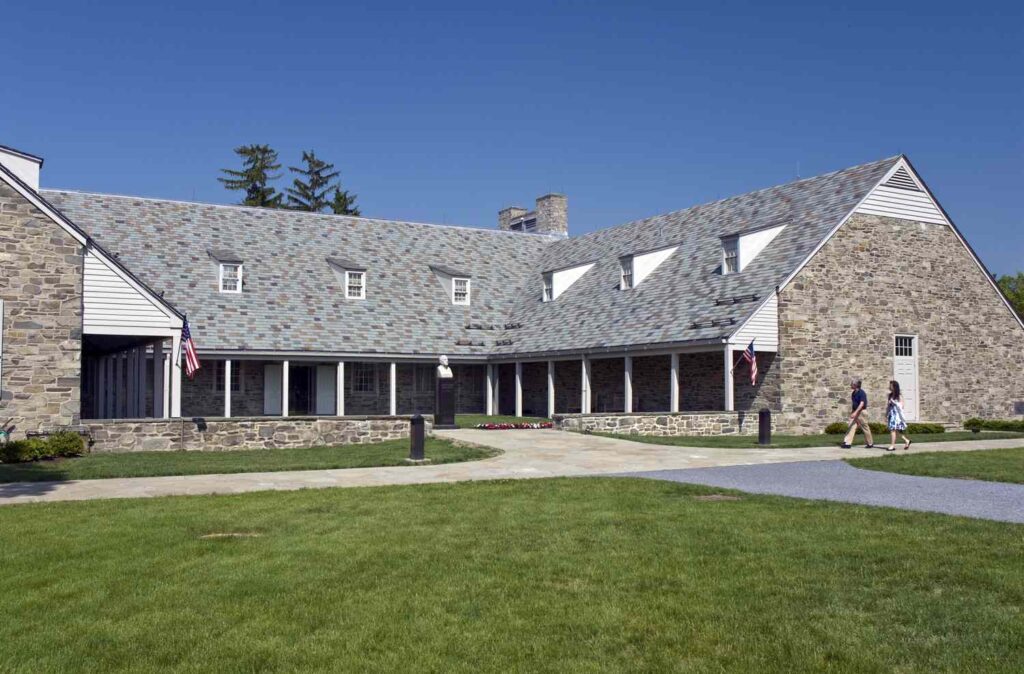
Understanding the historical context of presidential homes and libraries requires an appreciation of how these sites evolved over time and their role in documenting American history.
Evolution of Presidential Residences and Libraries
Presidential residences, from the early days of the Republic to the modern era, have varied widely in style, function, and significance. Early American Presidents, like George Washington and Thomas Jefferson, lived in grand estates that reflected both their personal tastes and the era’s architectural trends. These homes often served as centers of political and social activity, showcasing the blend of personal and public life that characterized early American leadership.
As the presidency evolved, so too did the residences. The White House, constructed during Washington’s presidency, became the primary executive residence, symbolizing the growth of the federal government and its expanding role in American life. Over time, other presidential homes became historical sites, offering insights into the private lives of Presidents and their families outside the political spotlight.
Presidential libraries emerged in the 20th century as formal institutions dedicated to preserving and studying the records of each administration. This development reflected a growing recognition of the need to archive and analyze presidential documents for historical and scholarly purposes. The Presidential Libraries Act of 1955 marked a significant milestone, establishing the foundation for a system that would eventually encompass multiple libraries dedicated to U.S. Presidents.
The Role of Presidential Homes in American History
Presidential homes are not just physical structures; they are emblematic of the broader historical narrative of the United States. These sites offer a glimpse into the lives of Presidents beyond their public personas, revealing aspects of their character, values, and influences. They provide context for understanding how these leaders shaped and were shaped by their times, offering visitors a tangible connection to key moments in American history.
For instance, George Washington’s Mount Vernon represents the colonial era’s grandeur and Washington’s personal legacy as the first President. Thomas Jefferson’s Monticello reflects the Enlightenment ideals and architectural innovations that influenced Jefferson’s vision for the nation. Similarly, Abraham Lincoln’s Springfield home offers insights into the life of a President who navigated the nation through its most tumultuous period, the Civil War.
Historical Significance of Presidential Libraries
Presidential libraries play a crucial role in preserving the documentary heritage of each administration. They house a vast array of materials, including personal correspondence, official records, and multimedia collections, which provide valuable insights into presidential decision-making processes, policy development, and historical contexts.
These libraries also serve as educational centers, offering resources for scholars, students, and the general public to engage with presidential history. They often feature exhibits, public programs, and research facilities that illuminate the complexities of each presidency and contribute to a deeper understanding of American governance and history.
In summary, the historical context of presidential homes and libraries underscores their importance as both historical landmarks and educational resources. They offer valuable perspectives on the personal and political lives of U.S. Presidents, enriching our understanding of American history and heritage.
Notable Presidential Homes
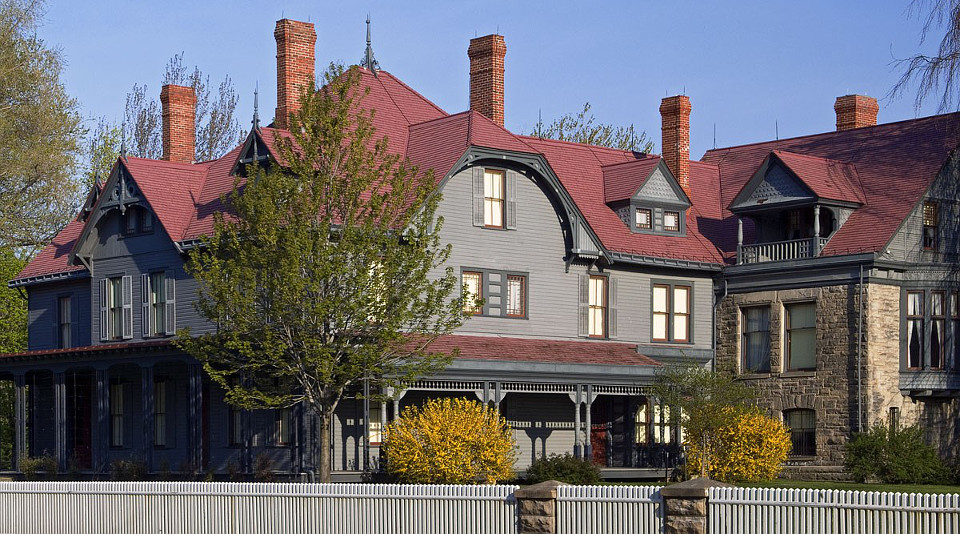
Presidential homes are more than just residences; they are repositories of personal history and national significance. Each home provides a unique window into the life and times of its inhabitant, reflecting the character and era of the President who lived there. Here are some notable presidential homes, each offering distinct insights into American history:
George Washington’s Mount Vernon
- History and Architecture: Mount Vernon, located in Virginia, was the plantation home of George Washington, the first President of the United States. The estate features a neoclassical architectural style that Washington, a proponent of classical ideals, admired. The mansion’s elegant design, with its distinctive cupola and expansive verandas, represents the grandeur of 18th-century American architecture.
- Key Features and Collections: The estate includes Washington’s original furnishings, personal artifacts, and extensive gardens. Visitors can explore the well-preserved rooms where Washington and his family lived, the estate’s outbuildings, including a blacksmith shop and a distillery, and the museum exhibits that highlight Washington’s life, leadership, and legacy.
Thomas Jefferson’s Monticello
- Historical Significance: Monticello, in Virginia, was the lifelong home of Thomas Jefferson, the third President and principal author of the Declaration of Independence. Jefferson’s architectural vision and his commitment to Enlightenment principles are evident in Monticello’s design, which combines classical elements with innovative features.
- Jefferson’s Contributions to the Design: Jefferson designed Monticello himself, creating a home that was both a personal retreat and a symbol of his intellectual and political ideals. The house features a domed entrance hall, unique architectural details, and a meticulously designed landscape that reflects Jefferson’s interests in agriculture and natural science.
- Insights into Jefferson’s Life and Era: Monticello offers a comprehensive view of Jefferson’s life, including his work as a farmer, inventor, and statesman. The estate’s exhibits and tours provide context about Jefferson’s contributions to American political thought and his complex legacy, including his relationship with slavery.
Abraham Lincoln’s Springfield Home
- Restoration and Preservation: Abraham Lincoln’s home in Springfield, Illinois, is a preserved 19th-century house where Lincoln lived from 1844 until he became President in 1861. The home has been meticulously restored to reflect its appearance during Lincoln’s residence, providing an authentic glimpse into his family life and pre-presidential years.
- Insights into Lincoln’s Life and Era: The home contains furnishings, personal items, and memorabilia related to Lincoln and his family. Visitors can learn about Lincoln’s early career, his political rise, and the social and political environment of Springfield during his time. The site also offers educational programs about Lincoln’s impact on American history and his leadership during the Civil War.
Franklin D. Roosevelt’s Hyde Park
- Roosevelt’s Impact on the Property: Hyde Park, located in New York, was the lifelong home of Franklin D. Roosevelt, the 32nd President. Roosevelt’s contributions to the property include extensive modifications to accommodate his role as a public figure and his personal needs. The estate reflects Roosevelt’s tastes and interests, including his dedication to public service and his love for the Hudson River Valley.
- Exhibits and Historical Artifacts: The estate features Roosevelt’s personal study, where he conducted much of his presidential work, as well as exhibits related to his New Deal policies and wartime leadership. The library and museum provide insights into Roosevelt’s life, his administration’s achievements, and his enduring influence on American politics and society.
John F. Kennedy’s Hyannis Port
- Kennedy Family Legacy: The Kennedy family’s compound in Hyannis Port, Massachusetts, was a summer retreat for John F. Kennedy and his family. The property, overlooking Cape Cod Bay, symbolizes the Kennedys’ connection to their New England roots and their emphasis on family and public service.
- The Home’s Role in Presidential History: While the property is not open to the public in the same way as other presidential homes, it remains a significant site in Kennedy family history. It was a place where Kennedy spent time away from the pressures of the presidency and where he and his family enjoyed moments of respite and reflection.
Each of these homes offers a distinctive perspective on the lives of America’s Presidents, providing valuable historical and personal insights that enrich our understanding of their contributions to the nation.
Presidential Libraries
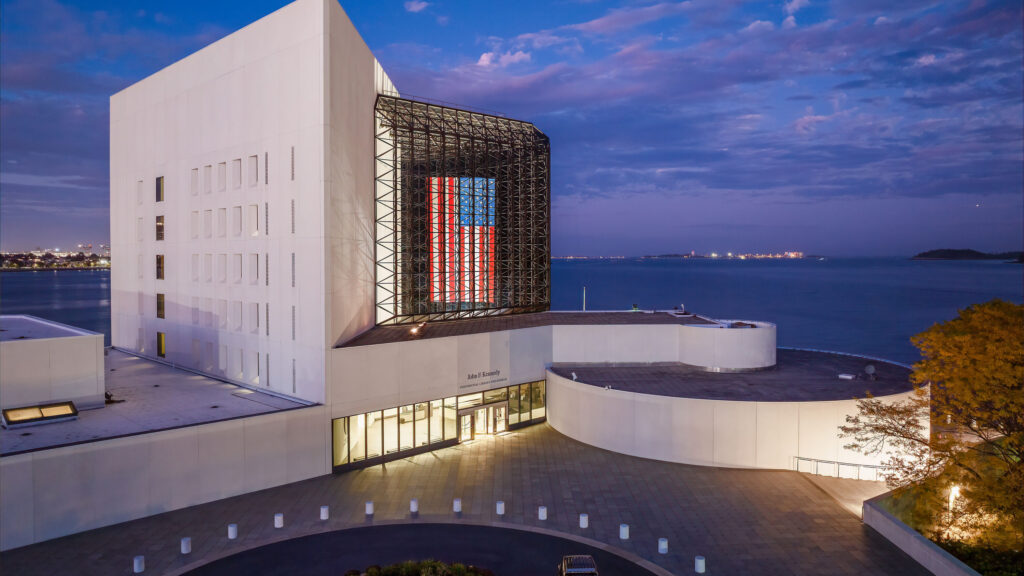
Presidential libraries are critical institutions dedicated to preserving the records and artifacts of U.S. Presidents, serving as research centers and educational resources that offer in-depth insights into the American presidency. These libraries not only safeguard historical documents but also provide a comprehensive view of each administration’s policies, achievements, and challenges.
The Presidential Library System
- Overview of the National Archives and Records Administration (NARA): The Presidential Library System is managed by the National Archives and Records Administration (NARA), a U.S. government agency responsible for preserving and providing access to federal records. NARA oversees the operation of presidential libraries, ensuring that they maintain the integrity of historical records and support scholarly research.
- Role and Purpose of Presidential Libraries: Each presidential library serves as a repository for the official papers, correspondence, and artifacts from a President’s time in office. These libraries are designed to document the administration’s policies, decisions, and historical context, offering researchers, historians, and the public valuable resources for understanding presidential leadership and governance. They also aim to promote public education through exhibits, educational programs, and outreach initiatives.
Highlights of Major Presidential Libraries
- Herbert Hoover Presidential Library
- Focus on Hoover’s Contributions: Located in West Branch, Iowa, this library focuses on the life and presidency of Herbert Hoover, the 31st President. The library’s collections include Hoover’s personal papers, speeches, and artifacts from his humanitarian work and presidency during the Great Depression.
- Collections and Exhibits: The library features exhibits on Hoover’s early life, his efforts in international relief work, and his presidency. Visitors can explore how Hoover’s policies and leadership responded to the economic challenges of his time.
Ronald Reagan Presidential Library
- Key Exhibits and Memorabilia: Situated in Simi Valley, California, the Ronald Reagan Presidential Library houses a vast collection of materials from Reagan’s presidency, including personal documents, gifts from foreign leaders, and artifacts related to significant events of his administration.
- Reagan’s Legacy and Impact: The library offers interactive exhibits, including a replica of the Oval Office and displays on major events like the Cold War and the end of the Soviet Union. It also features programs and events that explore Reagan’s influence on American politics and international relations.
George W. Bush Presidential Library
- Focus on Recent History: Located on the campus of Southern Methodist University in Dallas, Texas, this library contains records from George W. Bush’s presidency, including materials related to the War on Terror, economic policies, and major domestic and international events.
- Interactive Exhibits and Archives: The library features exhibits on key moments from Bush’s presidency, such as the 9/11 attacks and the response to Hurricane Katrina. It provides resources for understanding the complexities of contemporary presidential challenges.
Barack Obama Presidential Library
- Innovations in Modern Presidential Libraries: The Barack Obama Presidential Library, situated in Chicago, Illinois, represents a modern approach to presidential libraries with a focus on community engagement and digital access. It aims to reflect the diverse aspects of Obama’s presidency, including his policies on healthcare, climate change, and social issues.
- Community Engagement and Educational Programs: The library emphasizes interactive and educational experiences, including digital archives, public programs, and exhibitions that explore the Obama administration’s impact on contemporary issues and the future of democracy.
The Role of Presidential Libraries in Research and Education
Presidential libraries are invaluable for scholarly research, providing access to primary source materials that support historical analysis and academic study. They offer researchers the opportunity to delve into the decision-making processes and historical contexts of each administration. Additionally, these libraries serve educational purposes by hosting lectures, workshops, and student programs that promote a deeper understanding of American history and governance.
In summary, presidential libraries are crucial for preserving the legacy of U.S. Presidents and providing a comprehensive resource for understanding their contributions to American history. They play an essential role in documenting the presidency, supporting research, and engaging the public with the rich tapestry of presidential history.
Visiting Tips and Guidelines
Visiting presidential homes and libraries offers a unique opportunity to connect with American history and gain insights into the lives and legacies of U.S. Presidents. To ensure a rewarding and enjoyable experience, here are some practical tips and guidelines for planning your visit:
Planning Your Visit
- Best Times to Visit:
- Seasonal Considerations: Many presidential homes and libraries experience peak visitation during spring and summer months. If you prefer a quieter experience, consider visiting during the shoulder seasons (late fall or early spring). Winter visits may be less crowded but can also mean shorter operating hours or closures due to weather.
- Special Events: Check the institution’s calendar for special events, exhibitions, or educational programs. Attending these events can provide a deeper understanding of the site and its significance.
- Tickets and Reservations:
- Advance Purchase: Some sites require advance ticket purchases or reservations, especially during busy times or for special tours. It’s a good idea to check the official website or contact the site directly to secure your tickets ahead of time.
- Tours: Many presidential homes and libraries offer guided tours. Booking a tour in advance can ensure you get a spot, especially for popular locations. Tours often provide additional context and details that enrich your visit.
What to Expect
- Tours and Educational Programs:
- Guided Tours: Expect guided tours to offer a detailed overview of the site’s history, architecture, and significance. Guides often provide valuable insights and answer questions, making the tour a rich learning experience.
- Self-Guided Tours: If available, self-guided tours allow you to explore at your own pace using audio guides or printed materials. This option can be ideal if you prefer a more flexible visit.
- Special Exhibits and Interactive Displays:
- Exhibitions: Many presidential libraries and homes feature rotating exhibits or special displays. Take the time to explore these exhibits to gain additional perspectives on the President’s life and career.
- Interactive Elements: Some sites offer interactive exhibits or multimedia presentations that engage visitors in a more hands-on way. These features can enhance your understanding and enjoyment of the visit.
- Accessibility and Amenities:
- Accessibility: Most presidential homes and libraries strive to be accessible to all visitors. Check the site’s accessibility information in advance to ensure that any special needs or accommodations are addressed.
- Amenities: Facilities such as restrooms, gift shops, and cafeterias may be available at larger sites. Plan accordingly if you need to use these amenities during your visit.
Etiquette and Conduct
- Respectful Behavior: Presidential homes and libraries are often historic sites with significant cultural value. Be respectful of the property, follow posted rules, and adhere to any guidelines provided by staff.
- Photography: Some sites may have restrictions on photography, especially in sensitive areas or during tours. Always check the rules and ask permission if needed.
- Quiet and Considerate: Be mindful of other visitors by keeping noise levels down and allowing others to enjoy the experience. If you’re part of a tour group, follow the guide’s instructions and avoid disrupting the tour.
By following these tips and guidelines, you can ensure a meaningful and enjoyable visit to presidential homes and libraries. These sites offer a valuable opportunity to connect with American history and gain a deeper appreciation for the individuals who have shaped the nation’s past.
Conclusion
Visiting presidential homes and libraries offers more than just a glimpse into the past; it provides an immersive experience that connects visitors with the lives and legacies of America’s Presidents. These historical sites serve as important repositories of personal and public history, each telling a unique story about the individuals who have led the nation and the eras in which they served.
Reflection on the Importance of Preserving Presidential History
Preserving presidential homes and libraries is crucial for maintaining a tangible link to the past. These sites allow us to understand the personal and political dimensions of presidential leadership, offering insights into the everyday lives, challenges, and achievements of U.S. Presidents. Through meticulous preservation and thoughtful curation, these institutions safeguard the stories and artifacts that contribute to a broader understanding of American history.
Impact of Visiting These Historical Sites
A visit to a presidential home or library is more than a tour; it is an opportunity to engage with the history and heritage of the United States on a personal level. Exploring these sites can deepen one’s appreciation for the complexities of presidential leadership and the historical context in which decisions were made. It also fosters a greater awareness of how past leaders have shaped the nation’s development and values.
By engaging with these historical sites, visitors gain a richer perspective on the impact of presidential policies and the evolution of American governance. Each visit serves as a reminder of the enduring significance of presidential legacies and the importance of preserving history for future generations.
In summary, presidential homes and libraries are invaluable resources for exploring and understanding American history. They offer profound insights into the lives of U.S. Presidents and the historical moments they navigated. By visiting these sites, we honor their contributions and ensure that their stories continue to inspire and educate for years to come.


